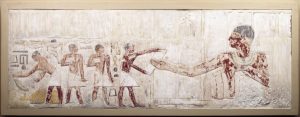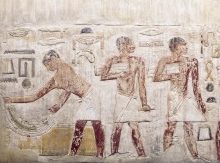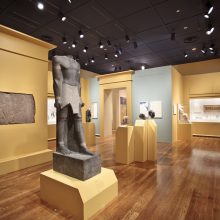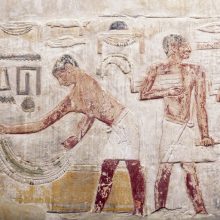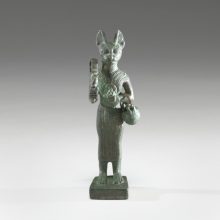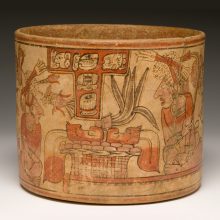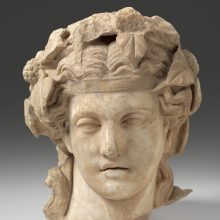This work of art is a limestone raised relief (a sculpture in which the figures project slightly from the background). Much of the original paint can still be seen on the surface of the relief.
It took several artisans to make an Egyptian relief. The first artisan made a preliminary drawing using red paint and a brush. Next, an artisan carved away the background to form the raised imagery. Once the limestone was carved, the artisan coated the relief with a thin layer of whitewash, a mixture of glue and whiting (chalk). The whitewash filled in holes, smoothed the surface, and provided a white background that brightened the colors in the relief.
This relief was made during the Old Kingdom during the great age of pyramid building. Many of the tombs made in this period are decorated with scenes of daily life, such as the one we see here.
The main figure in this scene is probably the nobleman named Methethy, whose tomb was located at Saqqara, a large cemetery near ancient Memphis.
